
@’s by Alex Ross!!!
 Hello out there in comic book land! It is I, superhero! I recently had a chance to have an e-mail exchange with legendary comic book artist Alex Ross about Dynamite Entertainment's upcoming new art book: THE DYNAMITE ART OF ALEX ROSS. It was a neat little e-discussion and I figured you’d all be interested in it so I offer it to you here! This new book looks to be another fantastic offering by Mr. Ross and I would suggest you all run out and get yourselves a copy ASAP as it looks to me like it’s going to be a hot item this holiday season!
Hello out there in comic book land! It is I, superhero! I recently had a chance to have an e-mail exchange with legendary comic book artist Alex Ross about Dynamite Entertainment's upcoming new art book: THE DYNAMITE ART OF ALEX ROSS. It was a neat little e-discussion and I figured you’d all be interested in it so I offer it to you here! This new book looks to be another fantastic offering by Mr. Ross and I would suggest you all run out and get yourselves a copy ASAP as it looks to me like it’s going to be a hot item this holiday season!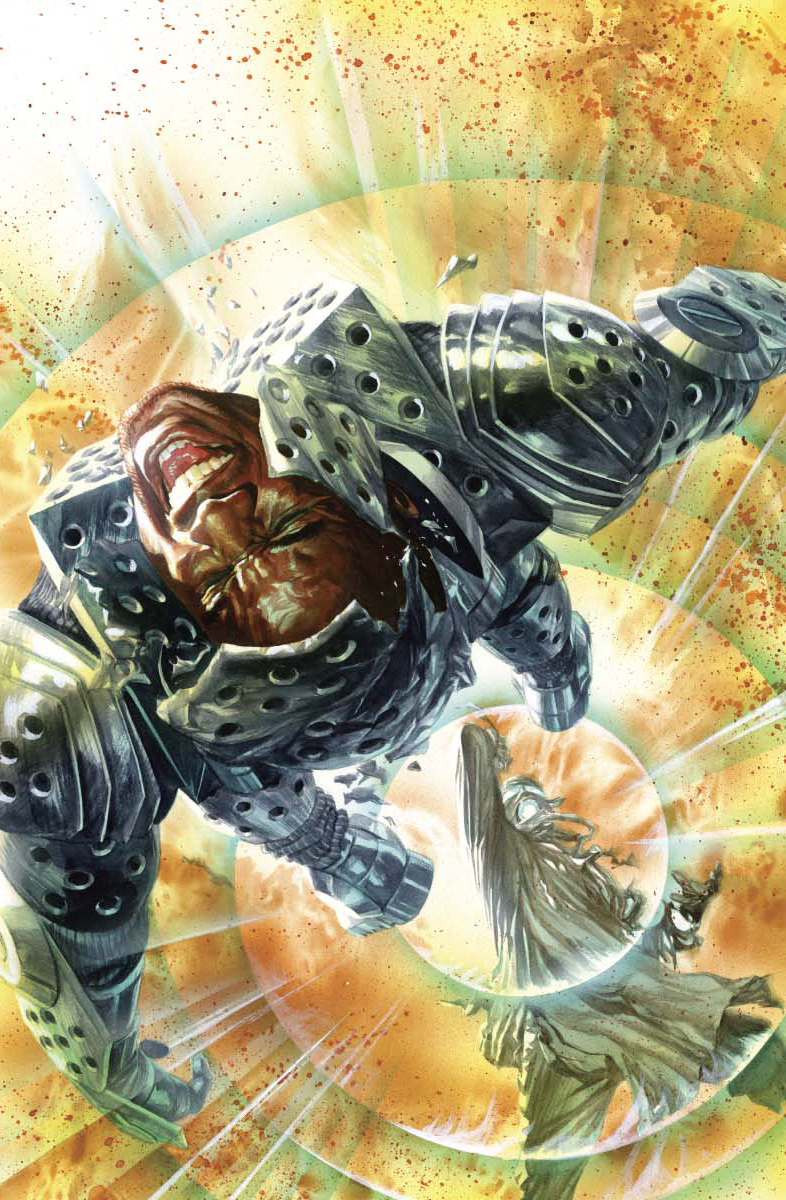 SUPERHERO: So how will THE DYNAMITE ART OF ALEX ROSS differ from your other art books? If someone owns say, ROUGH JUSTICE or MYTHOLOGY: THE DC ART OF ALEX ROSS, besides the different characters why should they check out this book?
SUPERHERO: So how will THE DYNAMITE ART OF ALEX ROSS differ from your other art books? If someone owns say, ROUGH JUSTICE or MYTHOLOGY: THE DC ART OF ALEX ROSS, besides the different characters why should they check out this book?ALEX ROSS (AR): Well, the format of the book does something the others didn’t, which is give you a full view of all the paintings I’ve produced for Dynamite seen full-size, without cropping in or selectively presenting pieces of my work. Each piece is shown larger than it has ever been seen before, without logos. I would hope for anyone who’s been interested in my work for DC that they would follow where I’ve gone into other likewise famous properties from comics history, including many pages featuring all of the work that I did for Marvel in conjunction with Dynamite.
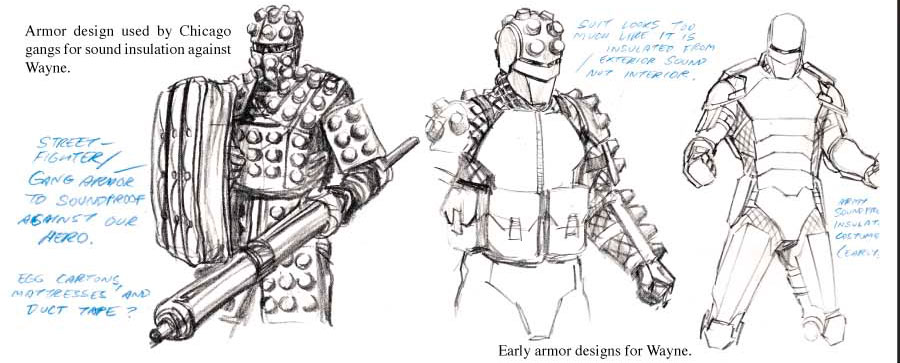 SUPERHERO: As a fan, I hadn’t realized that you’d actually done that much artwork for Dynamite. When did your collaboration begin with them exactly? Why did you start working with/for Dynamite in the first place? What is it about Dynamite as a publisher that appealed to you as opposed to any other independent publishers?
SUPERHERO: As a fan, I hadn’t realized that you’d actually done that much artwork for Dynamite. When did your collaboration begin with them exactly? Why did you start working with/for Dynamite in the first place? What is it about Dynamite as a publisher that appealed to you as opposed to any other independent publishers?AR: My relationship with Dynamite’s publisher goes way back many years, and I’ve consistently worked for him, particularly when he had licenses related to signed books and limited edition prints for Marvel, as well as statues that I designed.
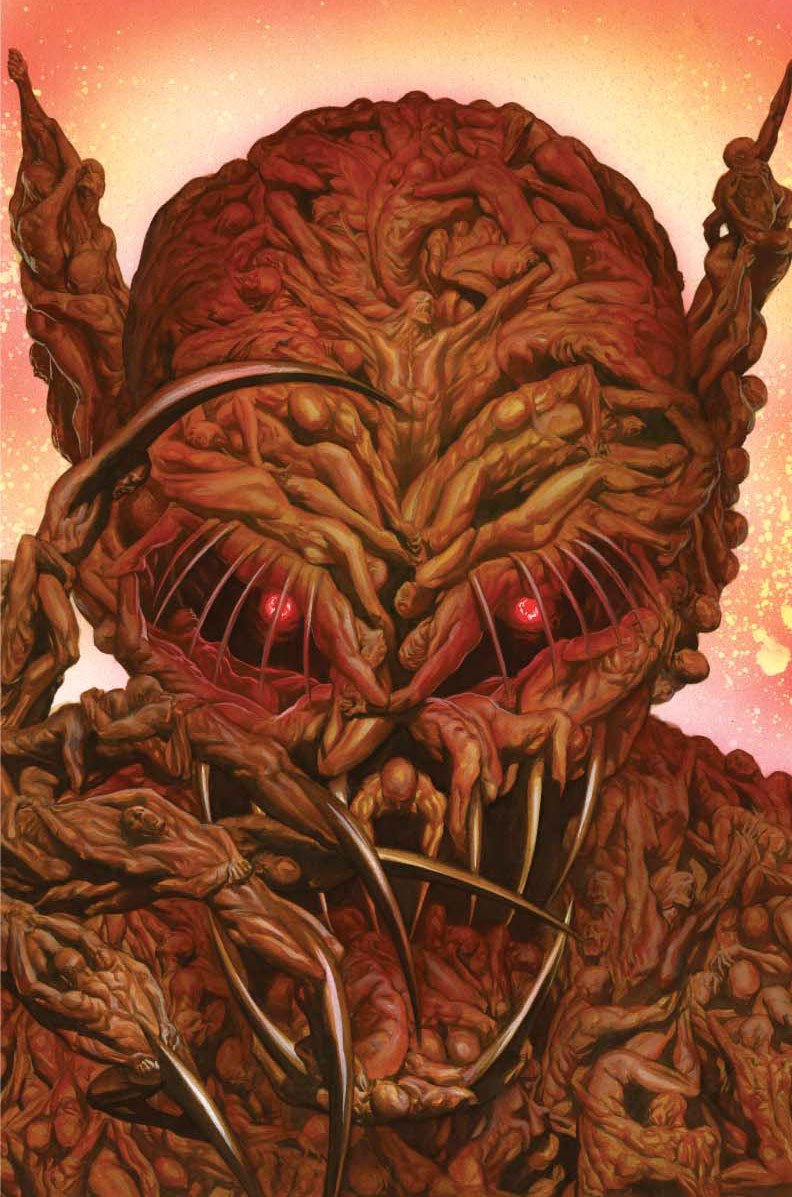 I’ve been working with Dynamite since its inception, doing covers like the first issue cover for RED SONJA, and during the time that I was finishing up my last longest work for DC, JUSTICE, we were planning not just the large project of PROJECT SUPERPOWERS, but also the Marvel series AVENGERS/INVADERS through Dynamite’s packaging agreement. As it’s worked out over the last few years, more and more of my work has gone to Dynamite because there’s been plenty of fulfillment working with them. All of the pieces I have to contribute – not just to a given series but all over the map of their publishing – where I could be utilized is taken to its greatest effect. What helps, too, is to have the chance through Dynamite to work with so many properties I grew up loving. Our tastes are similar, and that makes the work overall a very nice collaboration.
I’ve been working with Dynamite since its inception, doing covers like the first issue cover for RED SONJA, and during the time that I was finishing up my last longest work for DC, JUSTICE, we were planning not just the large project of PROJECT SUPERPOWERS, but also the Marvel series AVENGERS/INVADERS through Dynamite’s packaging agreement. As it’s worked out over the last few years, more and more of my work has gone to Dynamite because there’s been plenty of fulfillment working with them. All of the pieces I have to contribute – not just to a given series but all over the map of their publishing – where I could be utilized is taken to its greatest effect. What helps, too, is to have the chance through Dynamite to work with so many properties I grew up loving. Our tastes are similar, and that makes the work overall a very nice collaboration.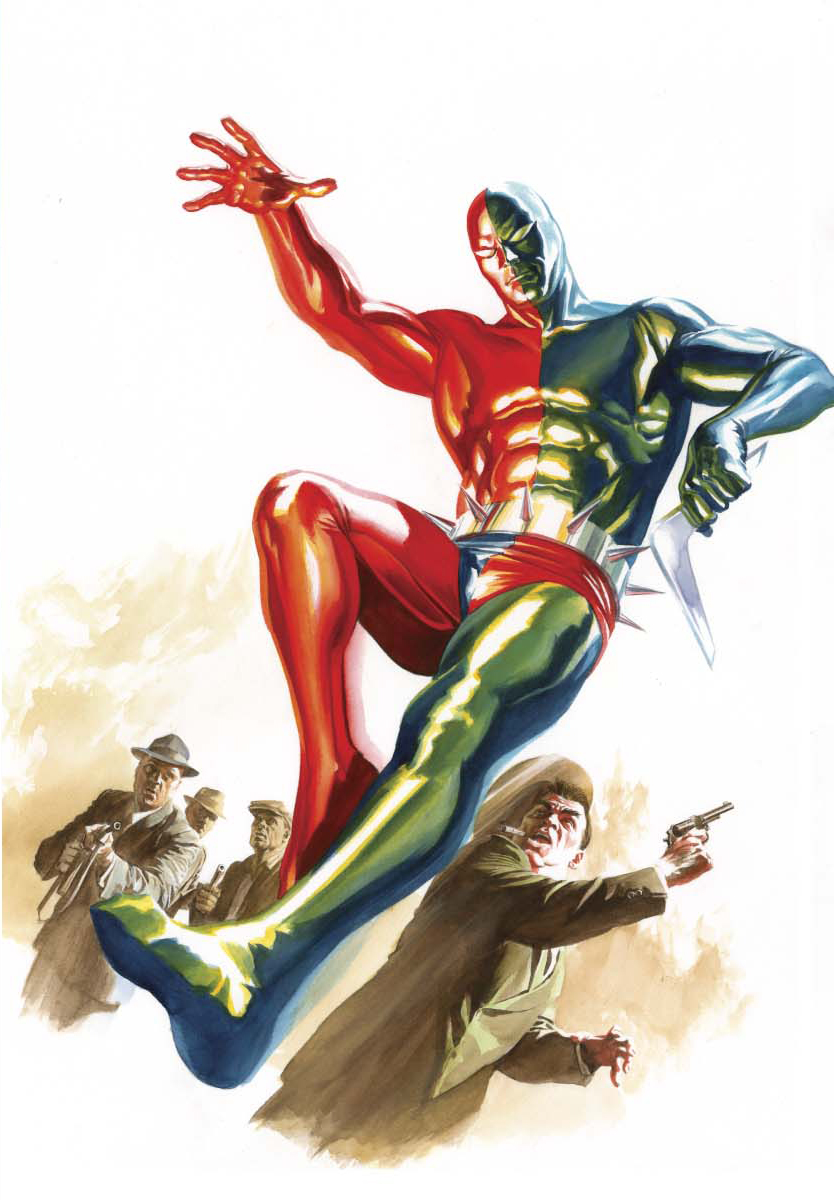 SUPERHERO: Exactly what is your role in the development of the various Dynamite properties? How does it work? It’s obvious with some projects but with others (Like CAPTAIN VICTORY) there can be a vague acknowledgement in the credits. Just how involved are you with everything?
SUPERHERO: Exactly what is your role in the development of the various Dynamite properties? How does it work? It’s obvious with some projects but with others (Like CAPTAIN VICTORY) there can be a vague acknowledgement in the credits. Just how involved are you with everything?AR: It depends on the book. Some series, like FLASH GORDON: ZEITGEIST or THE LAST PHANTOM, work closely with an early concept I contributed, and I might make other notes and designs over the course of the series. Most of the books I work on allow me to check the scripts, art, and colors and lettering, as everything comes in. PROJECT SUPERPOWERS and AVENGERS/ INVADERS had me working as closely with Jim Krueger as I had previously on the EARTH X trilogy for Marvel. The way Jim and I worked had probably some of the most deep personal investment for me, from every design, story turn, and overall execution as I could do, working with somebody who would allow me that much input.
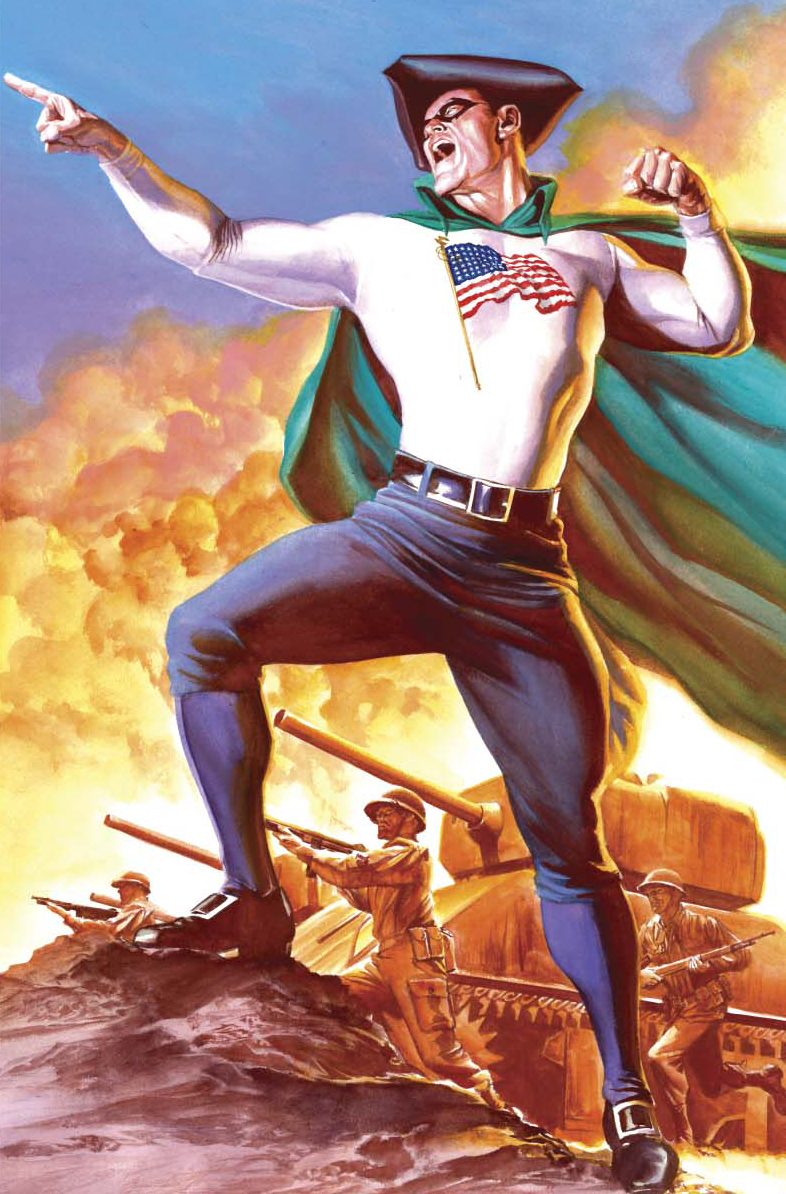 With projects like KIRBY: GENESIS, I’ve had a stronger hand in the interior art then on anything else that I didn’t do all the interiors for, where the majority of each issue’s layouts are done in a very detailed fashion by me to help guide how the various Kirby designs are interpreted as well as corresponding bits of art that I paint pages or panels for to intersect with the main artist. And some projects that I’ve contributed a lot of covers to I’m fairly well removed, like GREEN HORNET, where other than providing a new costume design, I basically tried to fit thematic covers to the content that was already in process.
With projects like KIRBY: GENESIS, I’ve had a stronger hand in the interior art then on anything else that I didn’t do all the interiors for, where the majority of each issue’s layouts are done in a very detailed fashion by me to help guide how the various Kirby designs are interpreted as well as corresponding bits of art that I paint pages or panels for to intersect with the main artist. And some projects that I’ve contributed a lot of covers to I’m fairly well removed, like GREEN HORNET, where other than providing a new costume design, I basically tried to fit thematic covers to the content that was already in process. SUPERHERO: Which of the projects or characters at Dynamite were some of your favorites to work on or play with?
SUPERHERO: Which of the projects or characters at Dynamite were some of your favorites to work on or play with? AR: KIRBY: GENESIS has been a real blast to touch the aesthetic of Kirby. His art designs for his independent creations channel much of what we did for DC and Marvel, and it’s very fulfilling to interpret that stuff and sort of live in the skin of Kirby’s sensibilities. I was most inspired with and invested in the SUPERPOWERS universe for Dynamite because it called upon my historical passions for lost comics characters to revive and include, as well as new designs to be added to their number. We’ve built a world there that has quite a lot of passion going into it.
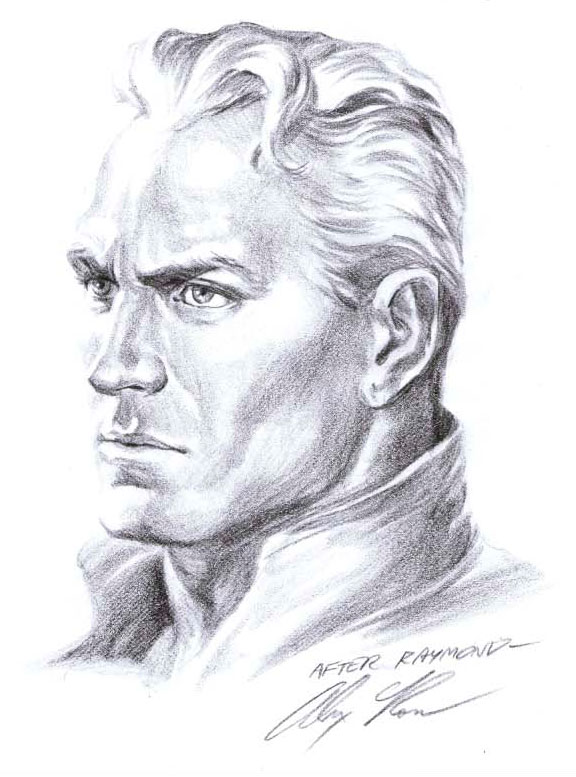 SUPERHERO: Now that you’ve worked with a publisher outside of the big two, are there any other independent publishers or indie characters you’d like to work with or on?
SUPERHERO: Now that you’ve worked with a publisher outside of the big two, are there any other independent publishers or indie characters you’d like to work with or on? AR: I have worked with other independent publishers before Dynamite, as ASTRO CITY itself began first as an Image series, then splintering from that to be WildStorm’s for a time before they became absorbed by DC. I worked extensively with Top Cow on BATTLE OF THE PLANETS and at some point I’ve worked with pretty much every publisher in the business. Every time I think that I’ve gotten all the childhood characters that I loved out of my system, there’s some other property that comes out of the woodwork that were heretofore unavailable. The recent ROCKETEER series and covers I did were a unique situation I never expected to pop up. In these days, it seems like almost everything is coming back as a property, and I’ve been lucky enough to be contacted for a few. A couple of the ones I am excited about are still in development, and I’m not supposed to divulge, especially because you never know when these things can fall through.
 Interviewer’s note: I knew about Ross’s other work for independent companies. I guess what I’d meant to ask him is if he was going to develop other series work for other companies. But in order to get this out for press in time for the publication of his book I wasn’t able to follow up on his answer here.
Interviewer’s note: I knew about Ross’s other work for independent companies. I guess what I’d meant to ask him is if he was going to develop other series work for other companies. But in order to get this out for press in time for the publication of his book I wasn’t able to follow up on his answer here.SUPERHERO: Do you have any upcoming plans to work with Marvel or DC again? Any big projects in the pipeline with the big two?
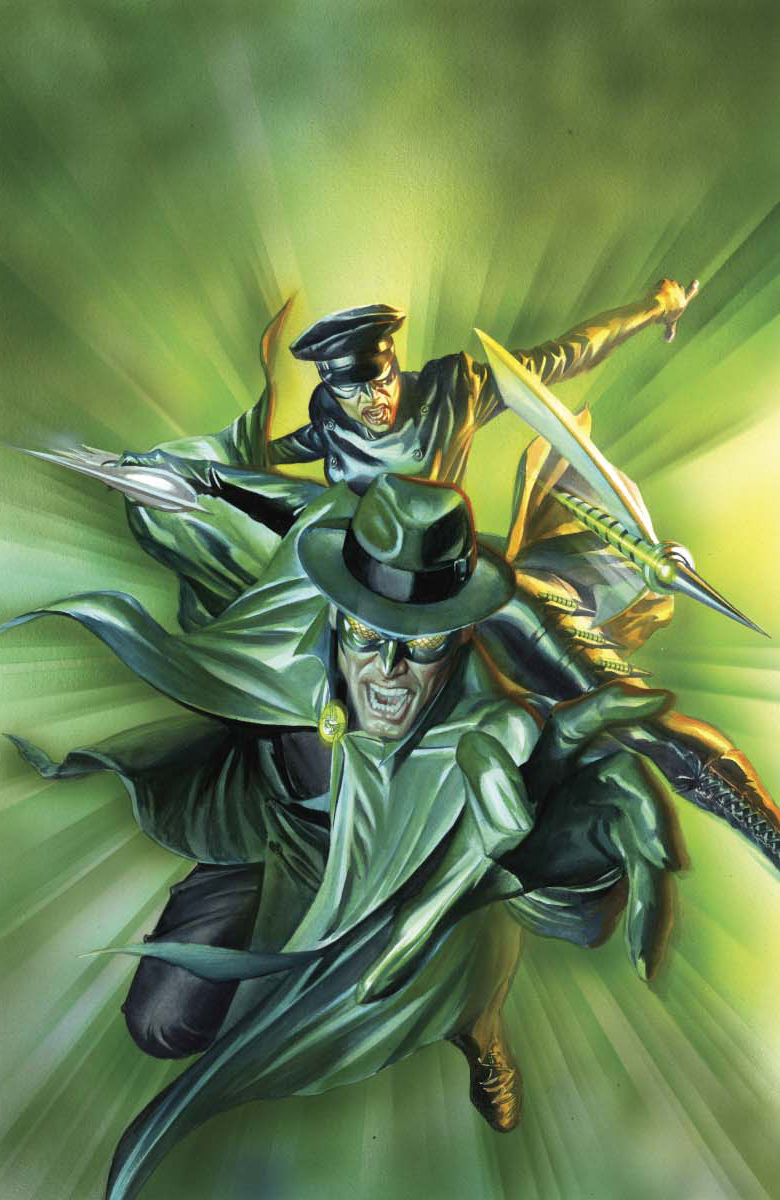 AR: Not currently, but I hope to remain in the business for some time to come, and I never expect to not work with those publishers again. As it has been, the major projects that people have seen me do for both DC and Marvel were ones that I brought to them. MARVELS, KINGDOM COME, JUSTICE, etc., were not things they pieced together but works that I built up over a while to pitch. I’ve never really been offered anything as far as a major series goes from either publisher that matched the size and ambition of those works. I’d like to think I’ll still have that opportunity in the future.
AR: Not currently, but I hope to remain in the business for some time to come, and I never expect to not work with those publishers again. As it has been, the major projects that people have seen me do for both DC and Marvel were ones that I brought to them. MARVELS, KINGDOM COME, JUSTICE, etc., were not things they pieced together but works that I built up over a while to pitch. I’ve never really been offered anything as far as a major series goes from either publisher that matched the size and ambition of those works. I’d like to think I’ll still have that opportunity in the future.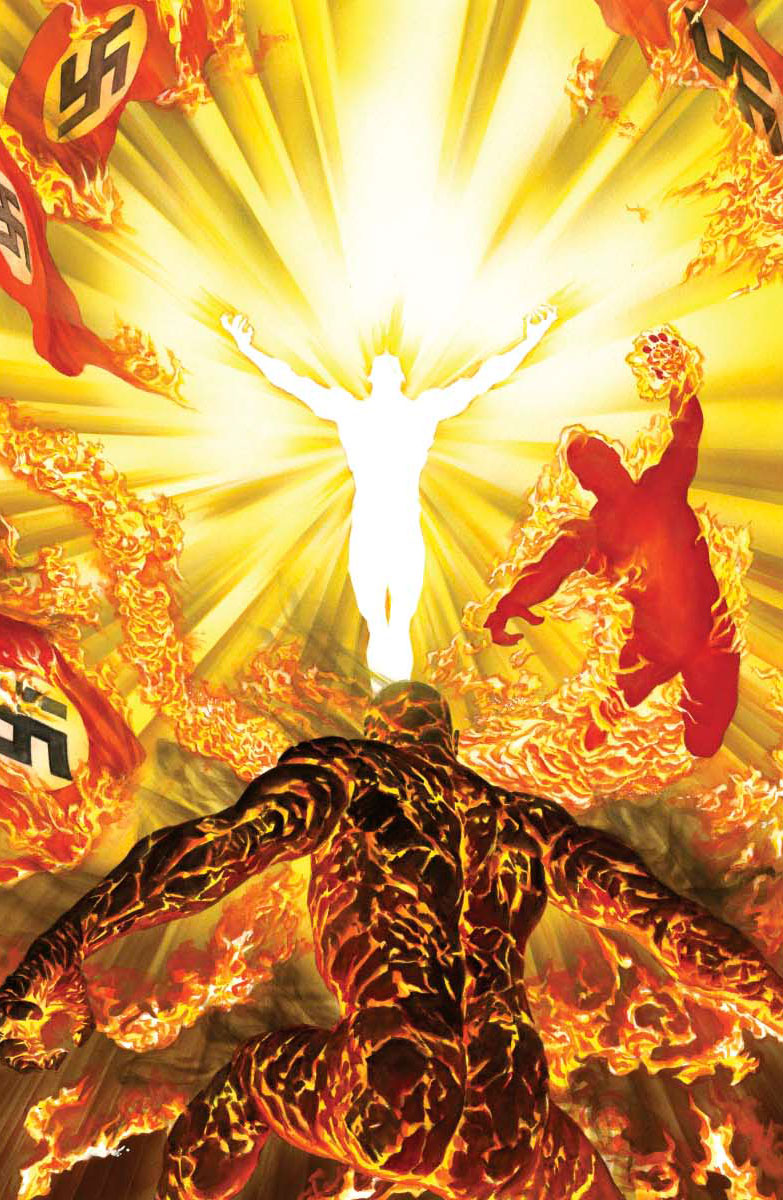 SUPERHERO: In past interviews that I’ve read with you it seems like you are a big fan of the classic versions of the DC/Marvel characters. Do you have any feelings regarding the new DC 52 “Reboot”? Do you have any feelings regarding what’s happening at Marvel these days? What did you think of the Marvel movies that have come out recently?
SUPERHERO: In past interviews that I’ve read with you it seems like you are a big fan of the classic versions of the DC/Marvel characters. Do you have any feelings regarding the new DC 52 “Reboot”? Do you have any feelings regarding what’s happening at Marvel these days? What did you think of the Marvel movies that have come out recently?AR: For the particulars of what’s gone on in publishing, I’d rather not comment. But I can say that I’ve very much enjoyed Marvel’s momentum with their films. Even if designers like myself are sticklers for certain things we want to see done a certain way, the broader impact of how well these characters’ stories are being handled is very positive and inspiring.
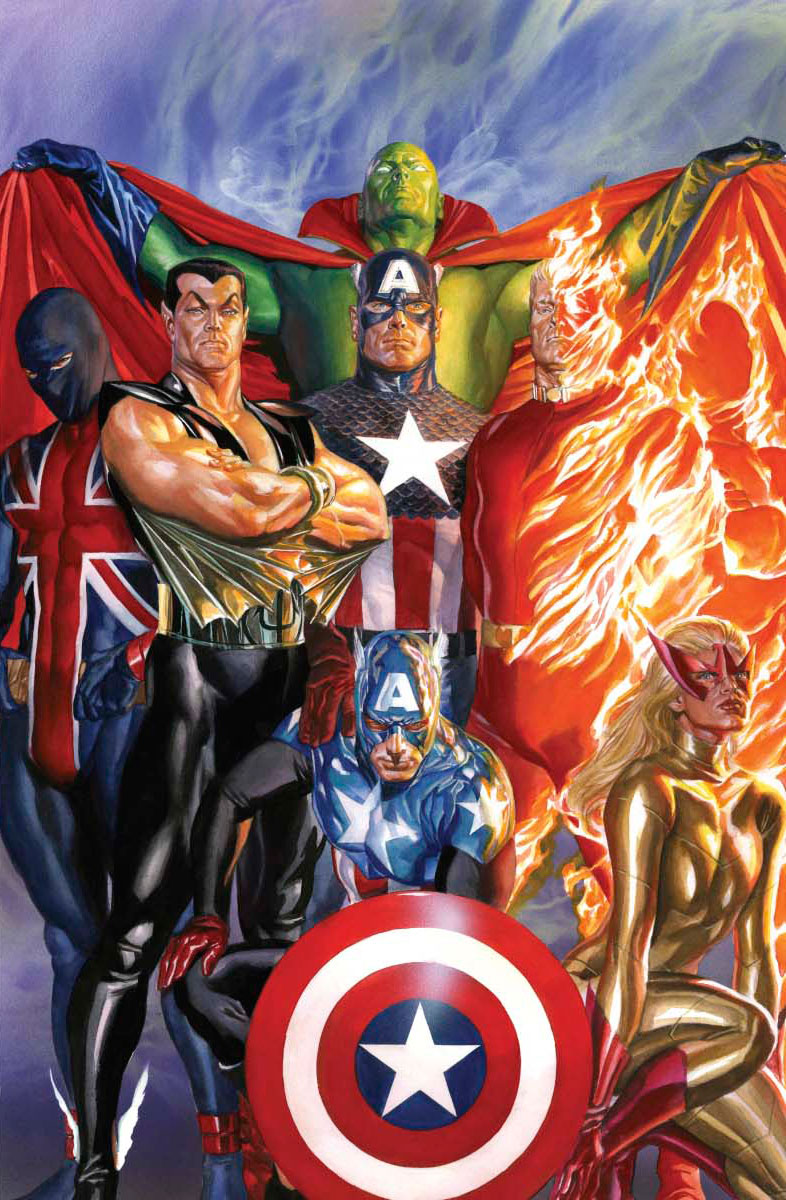 SUPERHERO: What exactly is it about older or seemingly obscure superheroes that you like so much?
SUPERHERO: What exactly is it about older or seemingly obscure superheroes that you like so much?AR: Maybe it has something to do with the way this medium first struck me as a child, when I saw images in the first history books about comics of characters from a bygone age. There was always something fascinating to me on an almost archaeological level with character designs that were from the initial gestation period of the superhero. A character like the Shadow, for instance, predates all superheroes, but had a sense of menace and cool to him that I don’t believe he lost by contrast to today’s tastes. With some of these old characters, like the beloved Captain Marvel, a desire exists in people like me to want to translate in a way that seems convincingly impressive for a modern audience. If I’m only translating things that are from contemporary sources that are already considered hip and edgy, there’s no challenge for me artistically to try and make something compete in this current marketplace. I always like the idea of the thing that came first getting its return and even revenge against its modern counterpart.
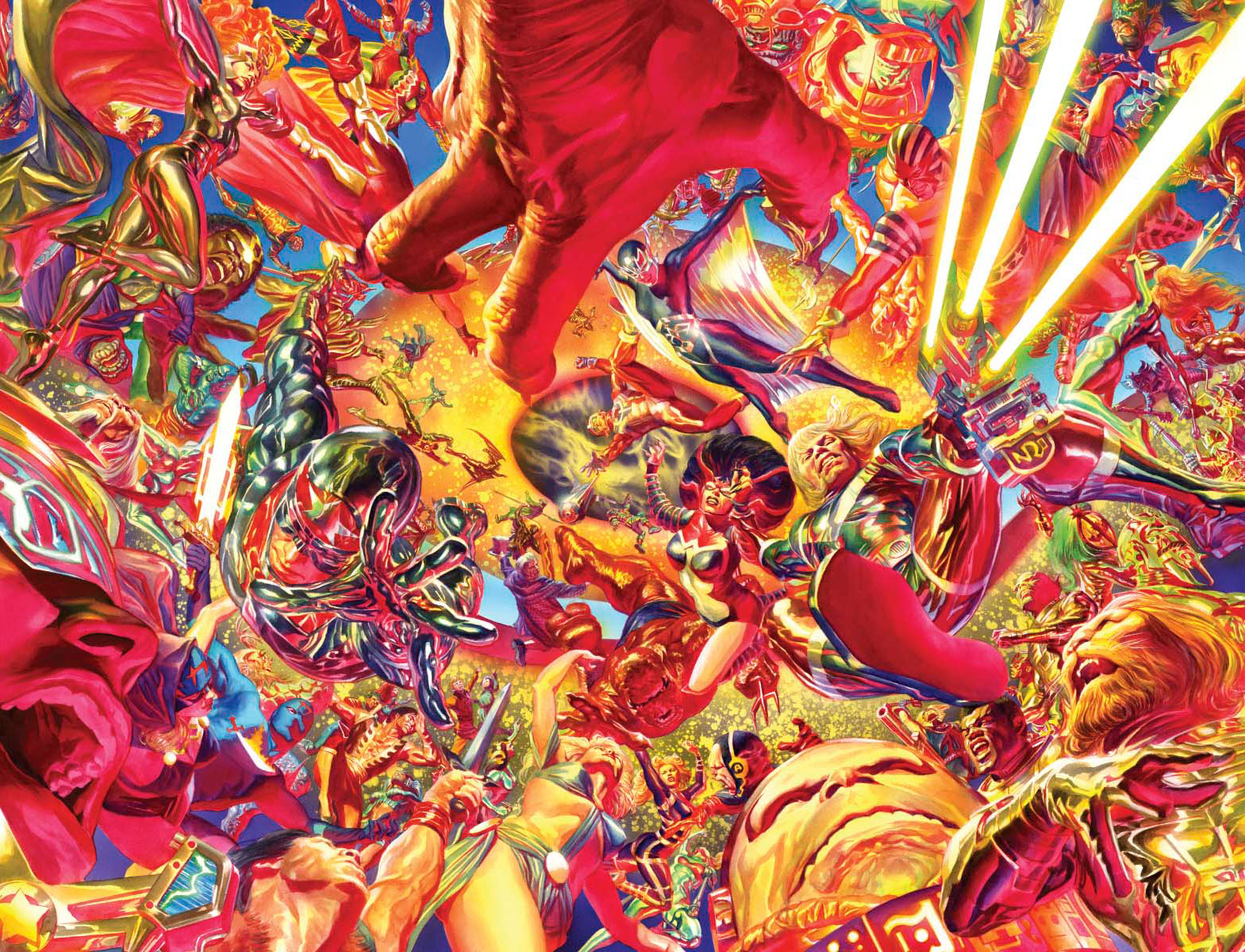 SUPERHERO: There seems to be a bit of negativity regarding using life models or photographs as reference in comic art these days. How do you feel about fans who take a negative view on that sort of thing? What do you say to comic fans who accuse you of being too dependent on that sort of thing?
SUPERHERO: There seems to be a bit of negativity regarding using life models or photographs as reference in comic art these days. How do you feel about fans who take a negative view on that sort of thing? What do you say to comic fans who accuse you of being too dependent on that sort of thing?AR: I’m sorry – I didn’t know it was so controversial. Certainly I’ve heard some criticism, but I see a load more artists today using live model reference, as well as digitally constructed figure reference in their work. When I started using models for the purpose of achieving a life-like storytelling, it was still a bit of a novelty. Now things have transformed to the point of your major superhero comics all seeming to be too realistic. I can agree with that negative perception that this stuff doesn’t need to all be so serious. I wanted that artistically when I was younger and wasn’t seeing enough of it. Now it’s fair to say we see too much reality and not enough magic.
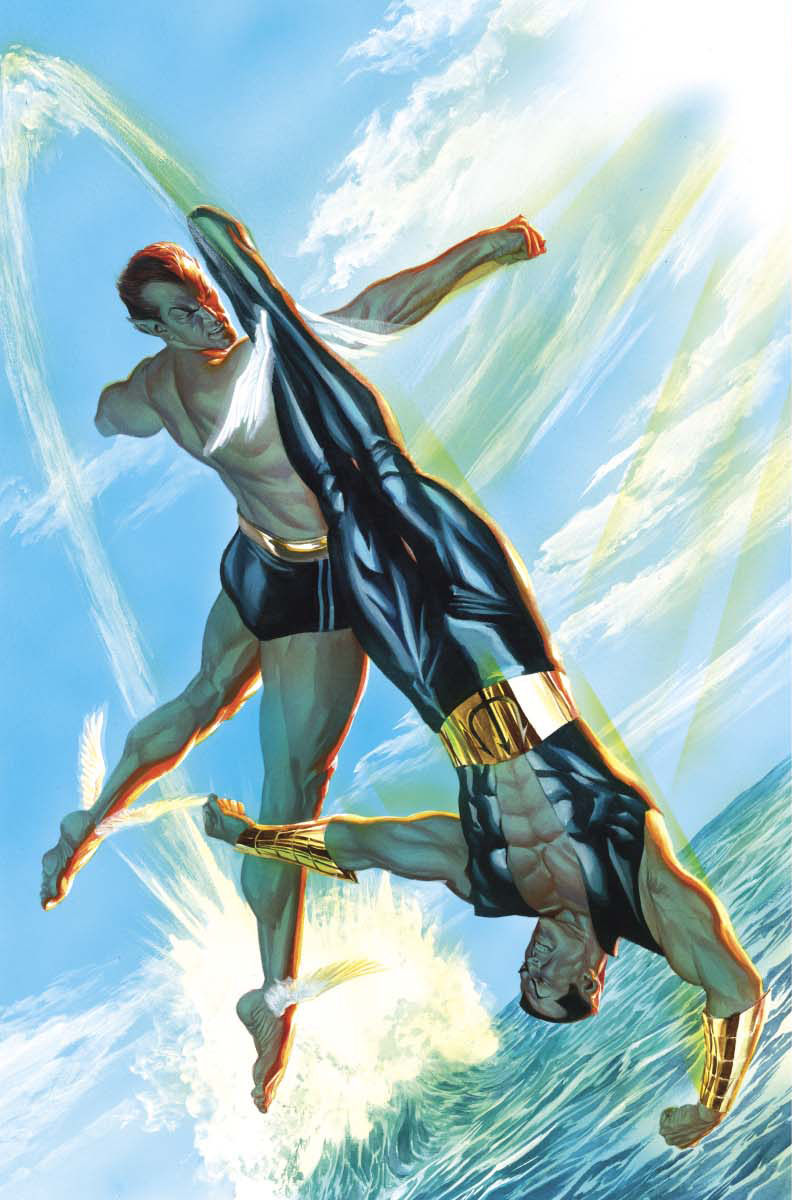 There is a purity of comic art the way things had been for decades before now. I think the best state for the art form is to have everything coexist, so for those that artists like myself let down, they wouldn’t have to feel trapped by us as their only option. In some cases, I would argue that people’s assessment of what I can’t do without reference is wrong. A good deal of what you see is from my mind, and I certainly don’t trace any photo I’ve used as reference. Be that as it may, if the overall effect is not engaging for the reader, they’re not wrong. It would serve me well to still be able to impress them, but the particulars of my process with or without photographs shouldn’t be the reason why someone dislikes my work.
There is a purity of comic art the way things had been for decades before now. I think the best state for the art form is to have everything coexist, so for those that artists like myself let down, they wouldn’t have to feel trapped by us as their only option. In some cases, I would argue that people’s assessment of what I can’t do without reference is wrong. A good deal of what you see is from my mind, and I certainly don’t trace any photo I’ve used as reference. Be that as it may, if the overall effect is not engaging for the reader, they’re not wrong. It would serve me well to still be able to impress them, but the particulars of my process with or without photographs shouldn’t be the reason why someone dislikes my work.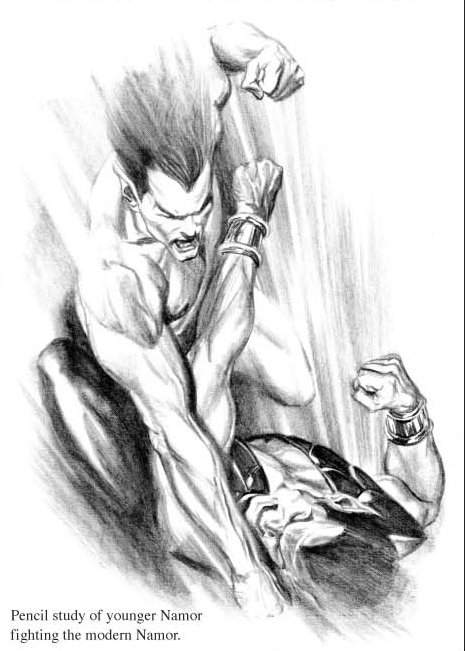 SUPERHERO: I noticed while looking over the Vampirella and Red Sonja art that you’ve for Dynamite that your female figures are sexy and attractive but never really veer over into the sort of salacious supermodel/adult film star actress look that a lot of comic artists seem to use when rendering female figures. In general, your female characters have always been attractive but respectful to female sensibilities. Can you share your thoughts on how you approach the female form in comics and do you have any opinions on the possible over-sexualization of it in comics?
SUPERHERO: I noticed while looking over the Vampirella and Red Sonja art that you’ve for Dynamite that your female figures are sexy and attractive but never really veer over into the sort of salacious supermodel/adult film star actress look that a lot of comic artists seem to use when rendering female figures. In general, your female characters have always been attractive but respectful to female sensibilities. Can you share your thoughts on how you approach the female form in comics and do you have any opinions on the possible over-sexualization of it in comics?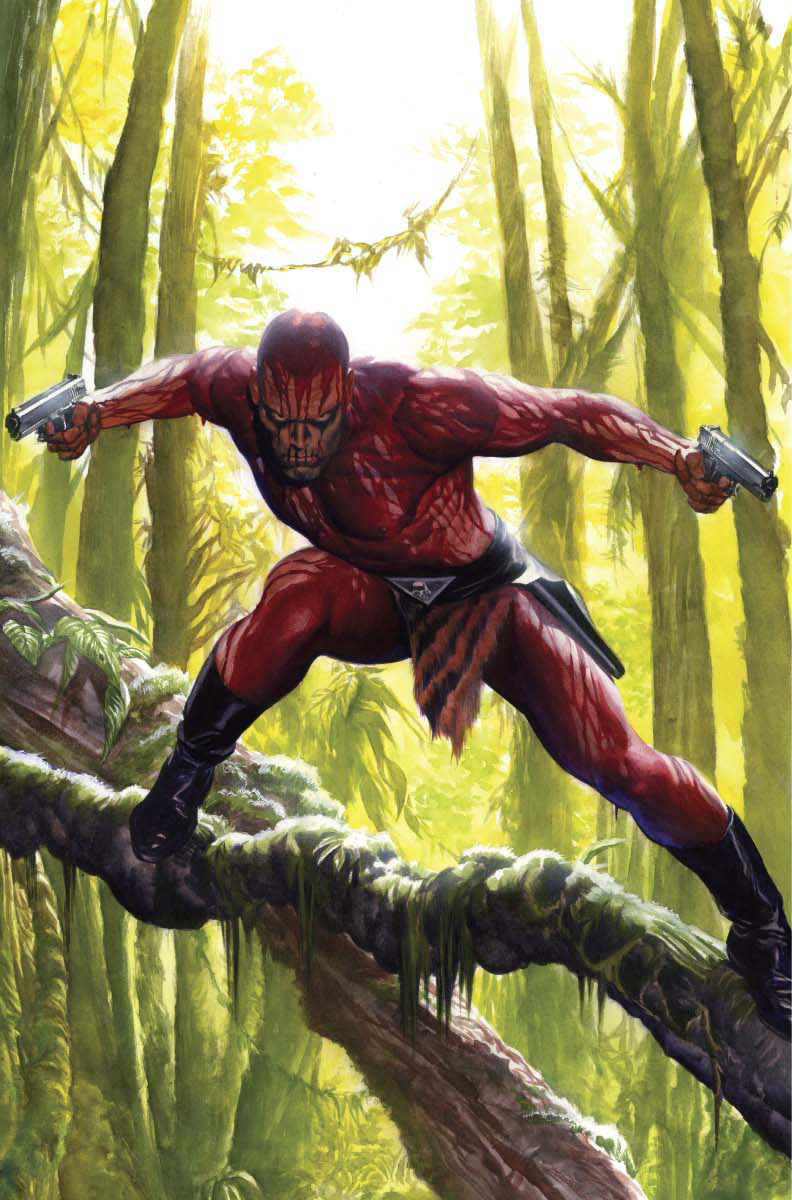 AR: Thank you very much for saying that, because I’ve heard the opposite assessment before. I would like to prove that I can draw attractive women, but my tastes may not always match of the reader. When drawing the female form, I’m thinking of the different body types that might apply to the given characters, and not all idealized super heroines should be formed in the same way. It sometimes seems like a creative challenge to draw women with a smaller bustline than what might be the norm in comics. I’m sure that it’s been said of my work that my female figures might seem a bit “hippy,” but aside from my own distillation of what I find attractive, this is the significant structural difference that separates the female shape from the male. In many cases, I’ve tried to stay away from overly busty female figures because I know the reality doesn’t support the fantasy often. I think what we see in comics too often is the shape of what is currently a product modern surgery, where a slender female form has this large shape that would not normally accompany that figure otherwise. In nature, a large bust is often accompanied by curves throughout.
AR: Thank you very much for saying that, because I’ve heard the opposite assessment before. I would like to prove that I can draw attractive women, but my tastes may not always match of the reader. When drawing the female form, I’m thinking of the different body types that might apply to the given characters, and not all idealized super heroines should be formed in the same way. It sometimes seems like a creative challenge to draw women with a smaller bustline than what might be the norm in comics. I’m sure that it’s been said of my work that my female figures might seem a bit “hippy,” but aside from my own distillation of what I find attractive, this is the significant structural difference that separates the female shape from the male. In many cases, I’ve tried to stay away from overly busty female figures because I know the reality doesn’t support the fantasy often. I think what we see in comics too often is the shape of what is currently a product modern surgery, where a slender female form has this large shape that would not normally accompany that figure otherwise. In nature, a large bust is often accompanied by curves throughout.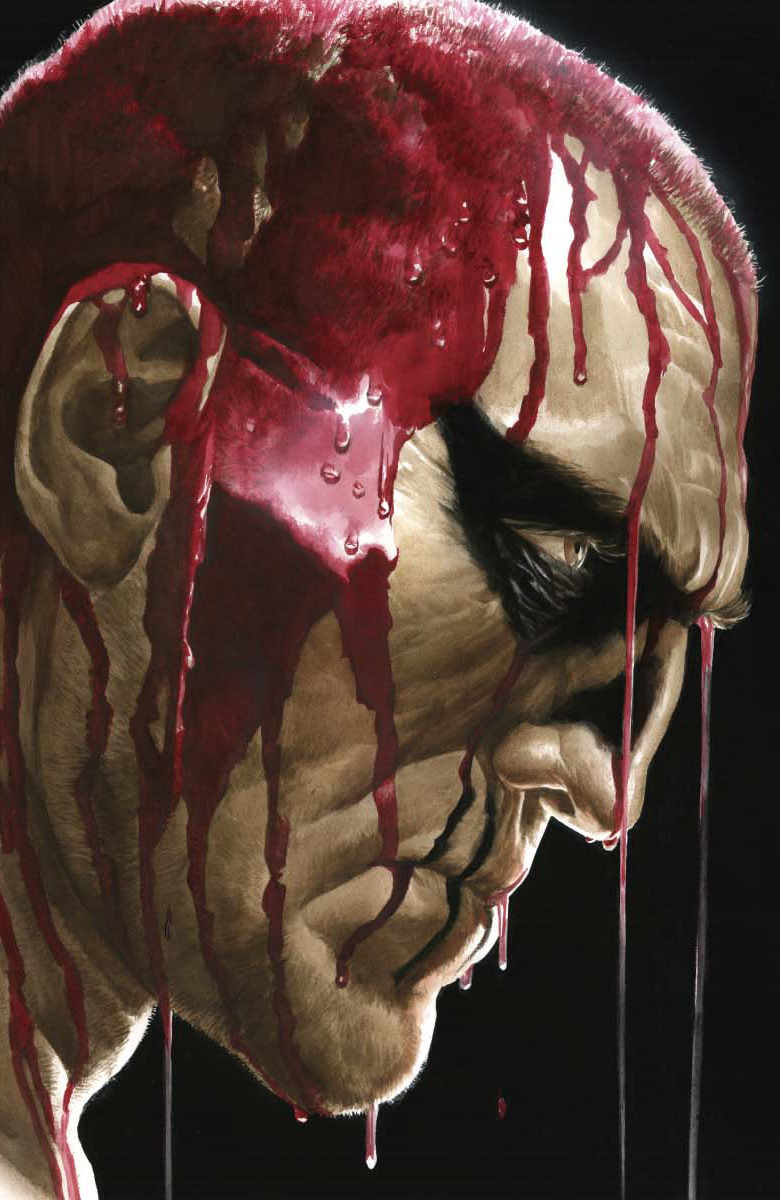 SUPERHERO: From what I understand of your artistic process you still work with traditional non-digital medium. Have you ever thought of or are you in the process of attempting to embrace digital painting?
SUPERHERO: From what I understand of your artistic process you still work with traditional non-digital medium. Have you ever thought of or are you in the process of attempting to embrace digital painting?AR: I’m sorry, because I think I might be offending people, but no. I enjoy what so many others are doing with digital art and envy the scope of what can be done there, but I just know it’s not what would satisfy me the most. It’s not just simply that I love working with my hands on paper, but the infinite possibilities that one has with a digital paintbrush and Photoshop tools that allow one to apply additional textures, as well as photo manipulation, seems almost too tempting to me. The way I work is limiting myself to eyeballing photo reference on the side, and the most technically advanced I get is using my cursed airbrush (which spits on me all the time). I’ve never even learned how to type, and all the business emails I do are through dictation. I know there’s a lot that’s interesting for people in the computer; it’s just not for me. It seems like today I have to apologize for that.
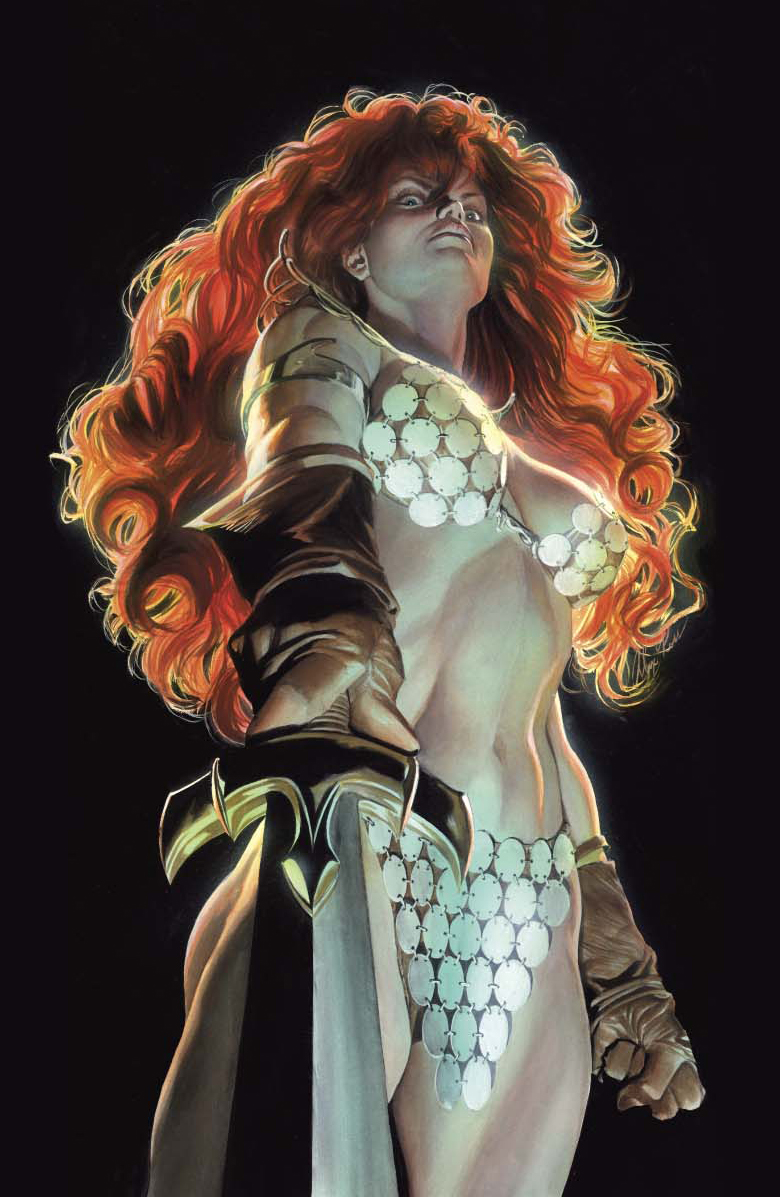 SUPERHERO: What are some projects/characters that you haven’t worked on that you’d love the chance to mess with? What is a project you’d love to do that no one would ever let you do?
SUPERHERO: What are some projects/characters that you haven’t worked on that you’d love the chance to mess with? What is a project you’d love to do that no one would ever let you do? AR: Without talking about other properties that might be in the works for me to work on, I have for many years had the desire to do an independently created series or graphic novel. My hesitation is largely due to commitment to other things first. There is a hope for somebody like me that when you could launch such a thing, you’d be able to achieve as wide of an audience as possible, and given the shifting nature of publishing and distribution, it seems like a particularly rough time to try it. I would love to think I had a strong audience for anything I had to offer that I put all the thought and work into that I would hope to somehow rival all the previous commercial work I’ve done.
 SUPERHERO: Well, that’s it! Hope you enjoyed it! I’d like to thank Mr. Alex Ross for taking the time to answer my questions and to Mr. Nick Barrucci at Dynamite Entertainment for setting the interview up! Be sure to check out THE DYNAMITE ART OF ALEX ROSS which should be in store this week!!!
SUPERHERO: Well, that’s it! Hope you enjoyed it! I’d like to thank Mr. Alex Ross for taking the time to answer my questions and to Mr. Nick Barrucci at Dynamite Entertainment for setting the interview up! Be sure to check out THE DYNAMITE ART OF ALEX ROSS which should be in store this week!!!Discovered as a babe in an abandoned comic book storage box and bitten by a radioactive comic fan when he was a teenager, superhero is actually not-so mild mannered sometime designer & cartoonist, Kristian Horn of Los Angeles, California. Some of his work can be seen at www.kristianhorn.com and check out his blog at www.parttimefanboy.com. You can check also out his webcomics at www.babybadass.com and thediplomatics.com, which is currently in development.
Proofs, co-edits & common sense provided by Sleazy G
